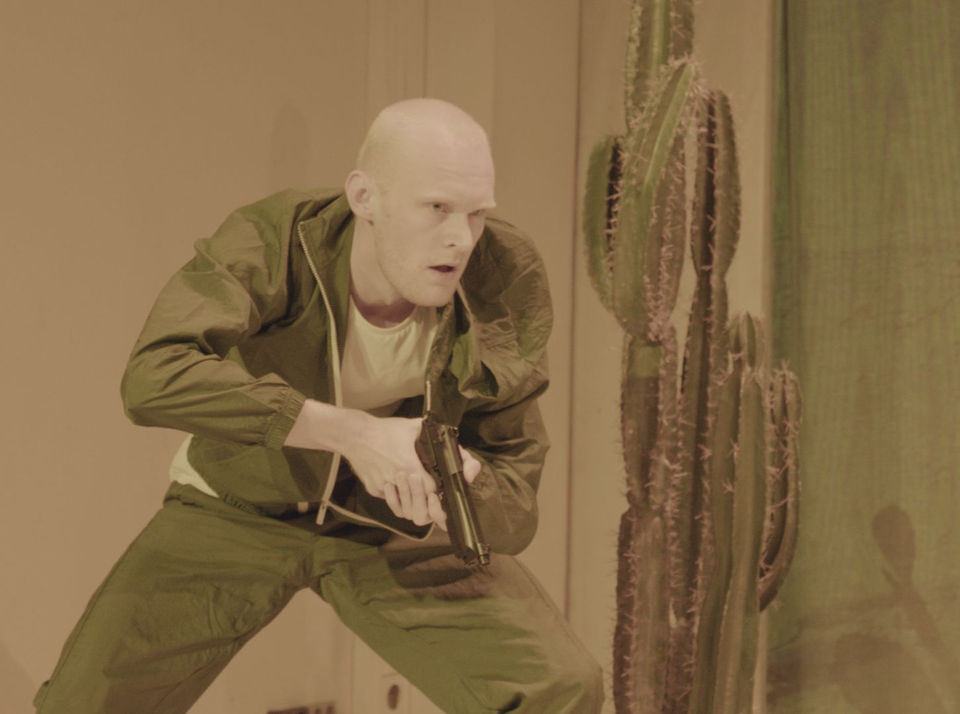
DIE ANATOMIE EINES HASEN
By Paula Kläy and Guido Wertheimer
directed by Marco Damghani
a UdK and Theaterdiscounter production
Berlin 2022
After the WILDWUCHS Festival, desert rabbits invade the TD stage...
This play from the workshop of scenic writing surprises with fresh, surreal interpretations of Sophocles' Antigone: King Creon and his son Haimon hunt rabbits in the desert, while Antigone herself seeks an island without drama and Mandžukić scores the goal in the 2013 Champions League final ...
The text by the young playwright duo uncovers completely new conflicts within the ancient plot: the focus here is on the dysfunctional father-son relationship between Creon and Haimon. They try to overcome their differences by spending some "quality time" together on a hunt, but stumble across Antigone instead. She urgently wants to escape her own myth and dreams of a transatlantic cruise.
The attempt by father and son to get closer fails mercilessly. Instead, Haimon realizes that without a real revolution he will never be able to face his father, who constantly walks all over him. In the end, as in Sophocles' classic, it is not possible to strip away the patriarchal structures and constraints without a certain... radicalism. But then, what remains of the memories? What remains of the dead?
This workshop production and cooperation between the TD Berlin and the acting and scenic writing courses at the UdK Berlin continues the authors' festival WILDWUCHS, where the first part of the play could be experienced in February.
More on the:












